Enjoy Free Shipping on Orders Above £50
Enjoy Free Shipping on Orders Above £50
Skincare 101:
Every blemish has a story to tell

Here’s a very relatable scenario -
You wake up one fine morning and discover a catastrophe.
The scene: The adjunction of your right nostril and your cheek.
The crime: A blemish – it could be acne or a spot on your skin that you had said your goodbye to the other day, has resurfaced once again.
The motive: To make you realize that the light at end of the tunnel was, in fact, the headlights of an oncoming train!
We all know the common reasons why blemishes occur.
But, again and again, in perpetuity?
Could there, perhaps, be some science to it?
A reliable explanation that can help you prepare better for the next time another one’s about to strike !?
Ayurveda says, YES!
Ayurveda looks at any kind of external signs on the body as causes of imbalance – in nature and in your body itself. How? Read along.

According to the philosophies of Ayurveda, there are five elements in nature, or what they call as
‘Pancha Maha Bhoothas’ in Sanskrit.
They are – Earth, Fire, Water, Air and Space. Ayurveda believes that each human is a unique composition of these
5 elements, and that these 5 elements are embodied in the human body in the form of
‘Doshas’. Ayurvedic teachings recognize
3 kinds of Doshas –
Vata (air and space), Pitta (fire and water) and Kapha (earth and water).
Every living human being has these 3 Doshas and a unique balance between them too.
Any vitiation in the composition of these 3 Doshas in the human body are what gets reflected as ailments.

Ayurveda says, the major cause of reoccurring blemishes is the
derangement of
‘jathragni’ or what can be called in common tongue as
‘the digestive fire’, which is a major cause of Dosha imbalance in the body, and in the context of blemishes, the Pitta Dosha.
When
jathragni deteriorates, the imbalanced Doshas push the body into producing more toxins that block the pores on your skin, also known in Ayurveda as
‘srotas’ or microscopic channels.
And when toxins are produced, it starts to show up on your skin, whether you wish to see them or not.
Did you know that Ayurvedic practitioners study the skin of a person in order to discover the status of their health? Healthy skin indicates a perfect balance of all your Doshas.
Your skin does speak a lot about your internal health as well!
Interestingly, the return of these skin blemishes are, in fact, vital clues about the imbalance of a particular dosha, or where in the body are those toxins being stored.
Below, insights from our Ayurvedic skincare experts. Happy reading!
There are different kinds of blemishes, and each of them speak for the Dosha whose imbalance has been the cause behind their appearance.
In short, which Dosha causes what kind of a blemish?
Spot the common kind of blemish that visits your skin and understand the root-cause, below!

Know that you’re not alone. In fact, the appearance of dark spots on your skin has an Ayurvedic explanation too.
Ayurvedic savants call dark spot ‘Vyanga’ meaning an unwanted speckle on your skin. The reason behind the appearance of a ‘Vyanga’ or a dark spot is the imbalance of not one but two Doshas.

According to ancient Ayurvedic text
‘Yoga Ratnakar’, an aggravation of both
Vata and Pitta Dosha in the system lead to the
appearance of darker spots on the face. Most often, these spots become extremely dark, almost black.
In modern skincare, we often interchange the words
‘dark spots’ with
‘age spots’, relating the phenomenon to nothing but a consequence of aging.
However, it’s not just aging, as a factor that plays a role in it, but also multiple others such as too much sun exposure, hormonal changes in your body, especially during menopause and inflammation from acne.
All of these factors raise Vata and Pitta dosha in the body and contribute to dryness and skin dehydration and blemishes.

Eat right, eat healthy:
Vata’s qualities are associated with cold, dryness and mobility, and on the other hand, Pitta’s qualities are associated with heat, lightness, intensity and fluidity.
A
Vata-Pitta Balancing Diet should be a mix of both – with
heating and cooling foods, moderately moist or oily,
grounding and stabilizing in nature, sweet but not too sugary, alternating with bitter and a bit of astringent occasionally.
Best foods to eat are oats, barley, cilantro, fennel, avocados, figs, bananas etc.
Herbs such as
saffron, turmeric, cardamom, triphala etc. are of particular importance when it comes to pacifying Vata and Pitta Doshas.

Pro tip: Mix turmeric and fuller's earth in equal parts and add curd to it to make a fine paste. Apply the concoction on your face and wash off in 30 minutes. Turmeric is known for its detoxifying and skin-brightening properties. On the other hand, fuller’s earth and curd are naturally cooler substances that can help soothe the aggravated Pitta dosha.
Or, you can also try
iYURA's Kesaradi Face Oil
- With base oils cooked meticulously with a number of herbs, this is rightly called 'the beauty elixir'.
This precious oil uses the powerful properties of saffron that has been known to:
1. Give a smooth skin
2. Care for dull skin
3. Improve face texture
4. Moisturise dry skin
Keeping the modern western user in mind, Kesaradi Oil has been designed to be light and gentle on the skin and have aromatic benefits too.
Immerse Your Pores In the Luxurious Indulgence Of
‘Red Gold’, The
Nurture Of The ‘Queen Of Flowers’
And
The Power Of The ‘Golden Spice’
- 3 Precious Drops Daily To A Moisturized, Revitalized Looking Skin!
If your skin needs more care, pair it with
Manjish Glow Night Time Face Elixir. Manjish Glow Elixir is a unique oil that uses the strength of 5 powerful herbs including Manjistha which are not easily available here in the West, that work in different ways to bring out a
clear-looking, moisturized complexion.
Do you often spot blackheads, whiteheads or milia on your skin?

Ayurveda has good reasons to believe that the appearance of blackheads, whiteheads and milia are causes of
Vata-aggravation in your body. These leave the skin feeling dry, rough and congested.
Unlike pimples, these are not filled with pus, neither are they deep. They are typically small, dry and are clogged with the naturally occurring substance in our skin known as ‘sebum’.
The fundamental cause is often dehydration and dryness. This could happen because of multiple factors such as less water consumption, lack of enough moisturisation, climatic conditions, amongst many more.
What should you do and what shouldn't you do to avoid the appearance of blackheads, whiteheads and milia?
One very basic thing we all can do is combat dehydration.
Drink enough water and fluids, include foods in your diet that have enough water content in them.
Some of the hydrating foods that can help balance Vata Dosha are
melons, okra, zucchini, avocados, sweet fruits, oranges, cherries etc. Try consuming more
fiber-rich foods as well.
Ayurvedic experts are also of the opinion that to tackle dryness,
healthy fats may prove helpful. Which is why they suggest consuming foods such as fatty fish, olive oil, chia seeds, flax seeds etc. However, strictly
avoid consuming dry fruits, beef, eggplants, apples etc. which are known to provoke Vata Dosha.
Similarly, herbs such as
Vetiver, Aloe Vera, Bakuchi, Ashwagandha, Shatavari etc. have proved their expertise in dealing with Vata-based skin imbalances.

Pro tip: Take 1-2 teaspoons of castor oil before going to bed. Make sure you take it on an empty stomach. It is a stimulant laxative. It helps to increase the movement of the intestines and thereby the bowel movement.
Try
Prinourish Superfood Face Serum -
suitable for skin prone to such spots
This serum is a unique, VEGAN blend of 4 rich oils to revive malnutritioned or under-nutritioned, dull skin!
• The
11 Ayurvedic herbs including fruits, herbs and spices, employed in this formula nourish and plump-up the look of sallow skin
• It
contains Vetiver Grass (Vetiveria Zizanioides). Owing to its natural affinity towards skin care and its wonderful aroma that can make your day, Vetiver Grass brings bounty of benefits.
• Is the
richest booster you could add to your daily skincare products to get a whole plethora of benefits from multiple plant-sources
• Works instantly to brighten dull-looking skin.
• Cleanses the pores; doesn’t clog them.
Also, presenting
Sweetgrass Aloe Toner:
A blend of time-honored ingredients such as
Sweetgrass, Aloe Vera, Helichrysum, Soy Glycerin, this toner works perfectly
for dull, sensitive skin. These skin-loving ingredients give your skin a boost of gentle hydration and help ease your skin-worries by gently tending to your trouble spots.
Are red, angry-looking bumps often a visitor on your cheeks and at times, your forehead?

According to Ayurveda, these red, inflamed bumps are indicators of Pitta imbalance in your body. Which means that the element of fire in your body is in excess.
Remember that Pitta is the dosha that administers your stomach, small intestine and your nose.
And what do we do when there’s excessive heat? We try and cool it down by consuming cooler foods.
And we don’t mean refrigerated, cold foods, but foods that are naturally cooler and offer a sense coolness to the body when consumed, such as
aloe vera juice, wheat, barley, coconut, fig, kale, celery, watermelon, sprouts, green salads etc.
Consume smaller or blended meals to go easy on your digestive system.
Avoid eating sour and spicy foods, excess of grease or oil, tomatoes, garlic, peanuts etc. These are foods that can further aggravate your Pitta Dosha.
Ayurvedic experts say that Pitta-aggravated acne require the gentlest of care.
Which is why they also suggest
topical application of aloe vera gel which is known for its purifying properties.


YLANG YLANG

TULSI
Pro tip: Drink a glass of aloe vera juice in the morning, along with a dash of turmeric. The anti-bacterial properties of these Ayurvedic herbs purify your body from within and help get rid of skin-related problems like acne.
But if you find the above tip too cumbersome, you can also go for Ajara Ylang Ylang Serum. It balances the visible effects of dryness, aging, soothes the appearance of flushed, acne-prone skin, and leaves you (and your skin) feeling relaxed with its ethereal aroma. Get ready to glow from inside out!
Win Over even the most Sensitive Skin. Experience the calming, coddling blend of
‘The Queen of Herbs’ and
‘The Wonder Herb’
for Visibly
Soothed, Clarified, Polished, Even-Toned, Pore-Refined
Clean-&-Clear-Looking Skin.
Introducing AJARA's VEGAN Soothing, Calming Concentrate -
Tulsi Neem Redeem Concentrate. This Pitta-Pacifying
Concentrate
is your Natural Solution for Troubled Skin.
Have you been witnesses to deep, cystic pus-filled painful acne near your t-zones?
Chances are your Kapha Dosha is on the high!
We understand how difficult it can be to deal with painful, pus-filled acne, regularly. Which is why we have compiled some information here. Follow them as they are, and notice a difference in days, without the help of intrusive methods.

Excessive Kapha is the assailant when it comes to large, persisting cystic acne. An excess of Kapha is an indicator of body’s slow, sluggish movements. This particular dosha also controls your lymphatic system.
Which is why the most important thing to do in case of Kapha imbalance is
adequate movement and exercise, especially one that helps
increase blood circulation in the body.
The best time to practice exercise are
early morning hours, according to Ayurveda. Make sure you do not let your body stagnate.
Dietary changes can also help lower down aggravated Kapha.
Bitter and astringent foods are best suited for Kapha-balancing diet.
Make sure you always consume warm water, no cooler than room temperature. Dry fruits, pomegranates, cranberries, eggs, whole grains etc. are foods that are helpful in this condition.
Strictly
avoid all dairy products, sugar, wheat and damp food. Also limit your intake of soy and fermented foods.

Pro tip: Drink ginger tea, mixed with a tablespoon of honey several times a day. Ginger contains natural oils known as gingerols that reduce inflammation and pain. Anti-inflammatory benefits of gingerols can help soothe irritated skin.
Herbs –
not just in your food, but also for your skin.
The ancient chest of Ayurvedic treasury consists of innumerable herbs commonly used in skincare that are known to carry multitudes of skin-benefitting elements within them.
In fact,
these herbs are so common that you may find them in your kitchen cabinets or may have at least heard of them.
On topical application of these herbs to your face, their soothing properties would help skin look clearer and free of blemishes.

Turmeric
A versatile Ayurvedic herb that helps clean up the skin pretty well by unclogging pores and smoothening the skin. It boosts complexion, wards off skin foes and activates skin's raw glow. This herb also helps with the look of aging signs, especially wrinkles and fine lines.

Dita Bark
Also known as the ‘cleansing tree’ in Ayurveda, the bark and the roots of this tree have been used in Ayurveda for their astringent activities. For skincare formulations, the bark of this tree is used since it has powers to keep the skin looking clean, clear and even-toned. This ingredient helps reduce the appearance of dark spots and blemishes.

Manjishtha
A rejuvenating and complexion enhancer, it helps in balancing the skin's temper-tantrums and uneven skin tone. It is often added to face care products to make the complexion even and tone down the appearance of uneven spots to give a relatively more even-looking complexion.

Neem
Neem is often called
Nature’s own Medicine Cabinet due to its astounding and powerful
cleansing properties.
It is a key, formidable ingredient that helps skin look
clearer, pure, clean and healthy.

Saffron
Did you know that Saffron contains more than 150 carotenoid compounds including safranal, zeaxanthin, lycopene and various α- and β-carotenes along with a rich source of riboflavin? Rich in Vitamins B2, B3 and B6, Saffron makes for an excellent herb to aid in restoring a brightened-look and even-toned skin.
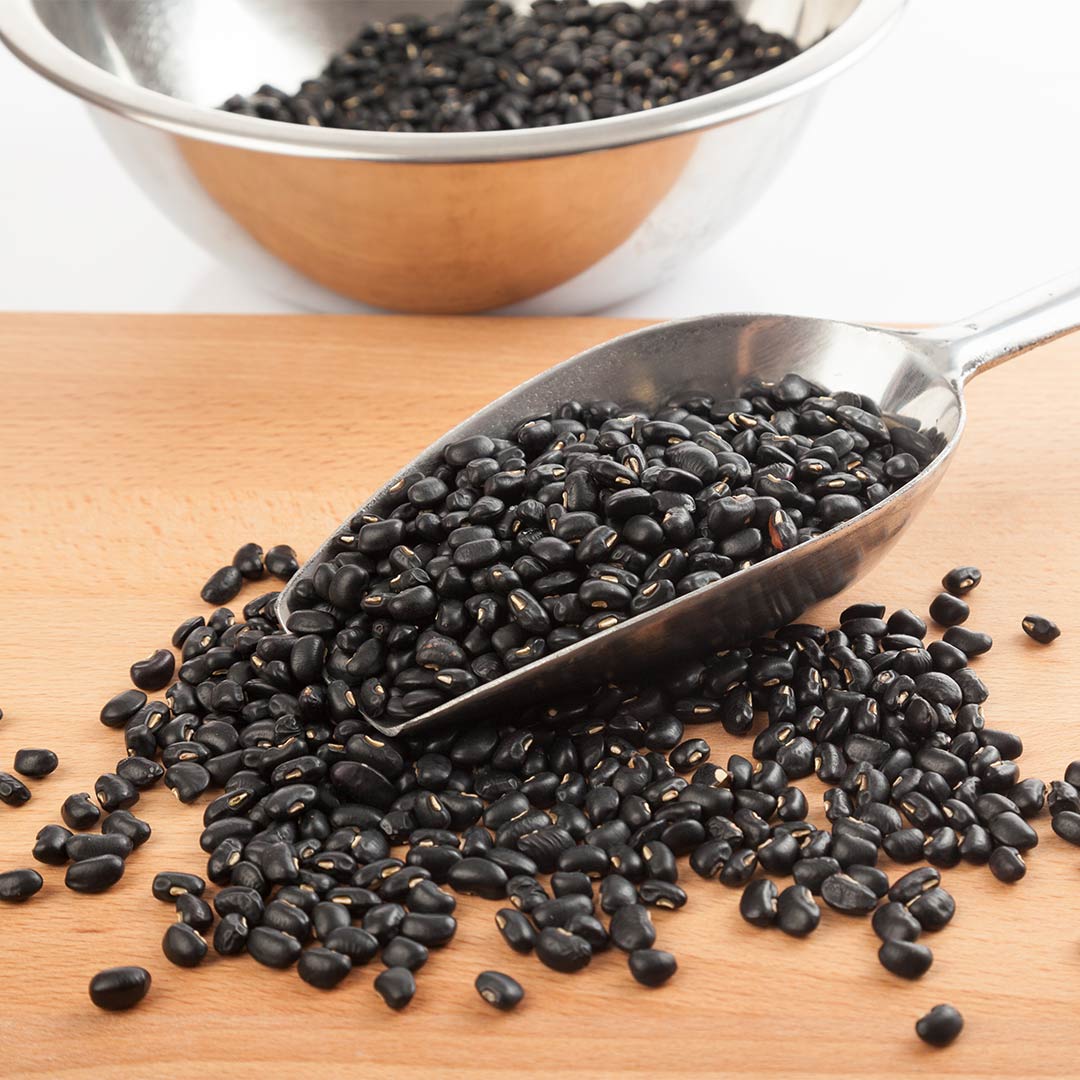
Black Gram
According to Ayurveda, Black Gram is the holy grail for mature skin. Ayurveda's belief in graceful aging brings the holistic gift of Black Gram for firming, toning and deeply moisturising skin that’s matured significantly over the years. This Ayurvedic ingredient contains many minerals to help the skin glow with softness and elasticity.
Next time, when you make a skincare purchase, look for some of these ingredients in the long list. If you spot them, rest assured, you’re in good hands!
Adopt an Ayurvedic skincare routine

Blemishes occur due to intrinsic and extrinsic reasons, and both these factors are dependent on each other. It is hard to pin-point only intrinsic factors without also getting the extrinsic aspects correct.
For centuries now,
Ayurveda has recognized the importance of herbs and spices naturally found in nature, to help ratify the appearance of blemishes on skin.
There are
traditional Ayurvedic formulations that use the synergy of these herbs and ingredients to keep skin looking clear and squeaky clean.
At iYURA, we formulate
pure, authentic, traditional Ayurveda in a modern, usable, alluring format, with results that are not mere promises – the gorgeous glow on your face would speak for it.
These
Dosha-specific formulations help keep skin clean from inside-out and shine through with a brilliant radiance.

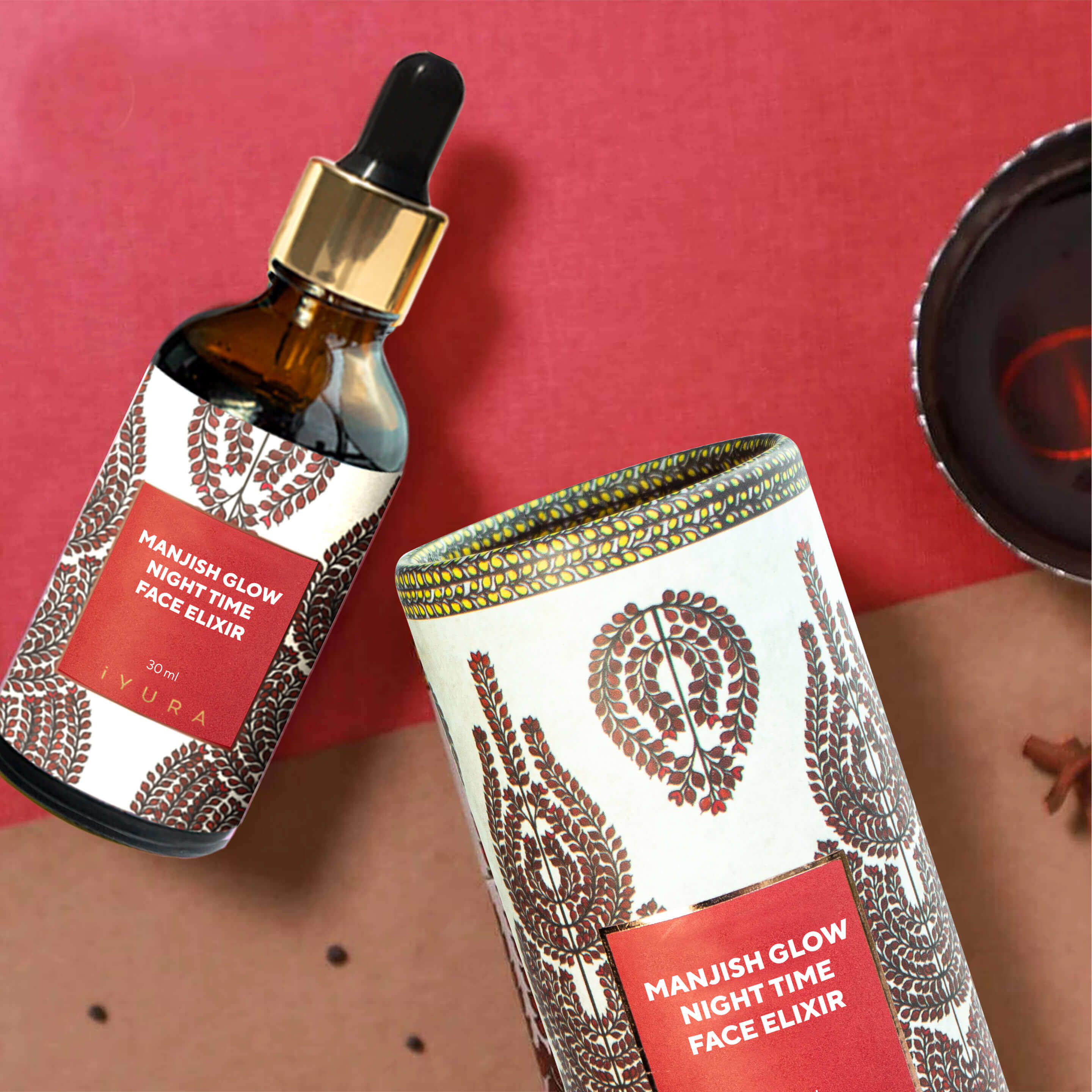
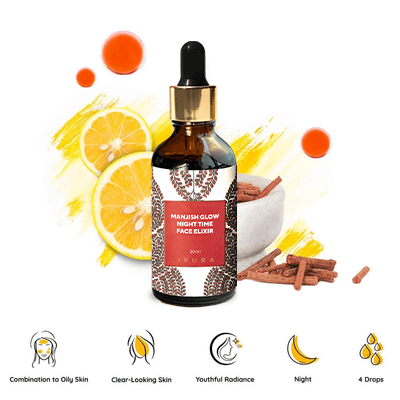
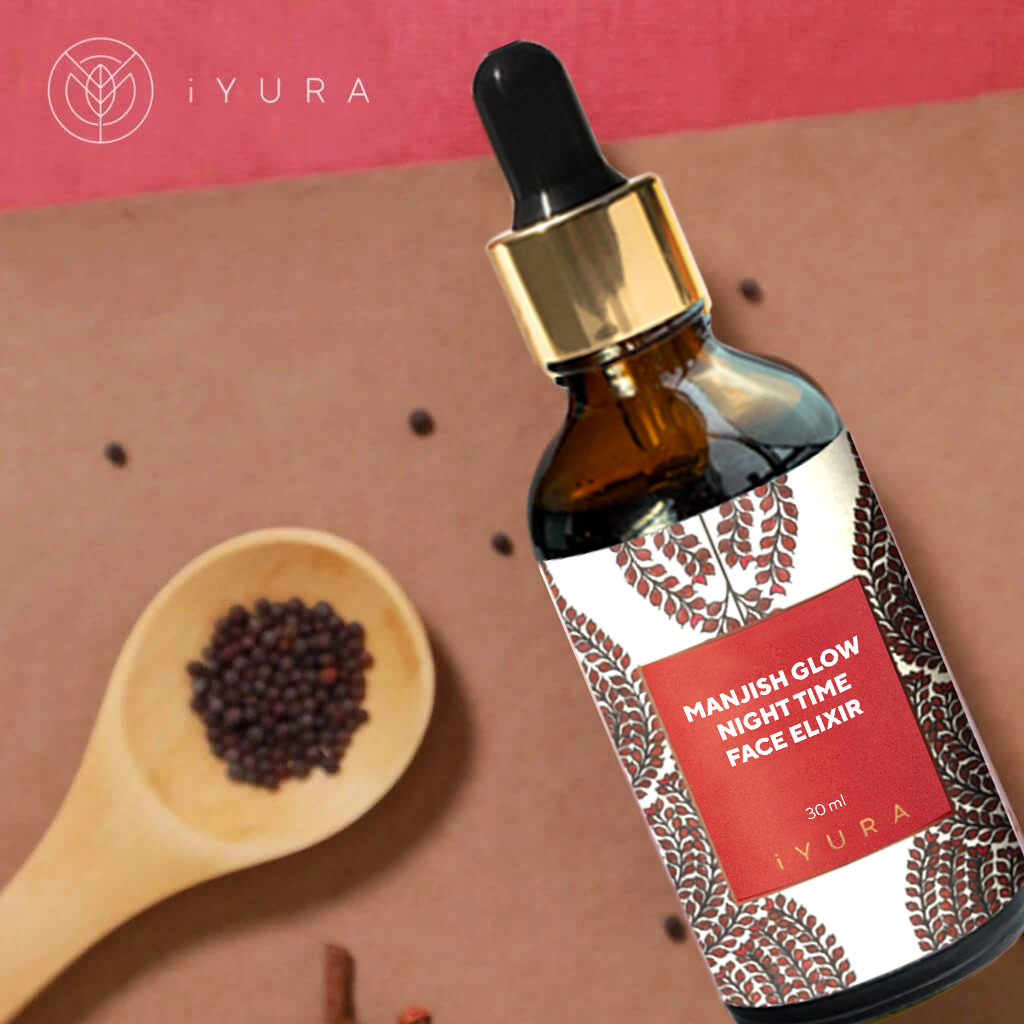
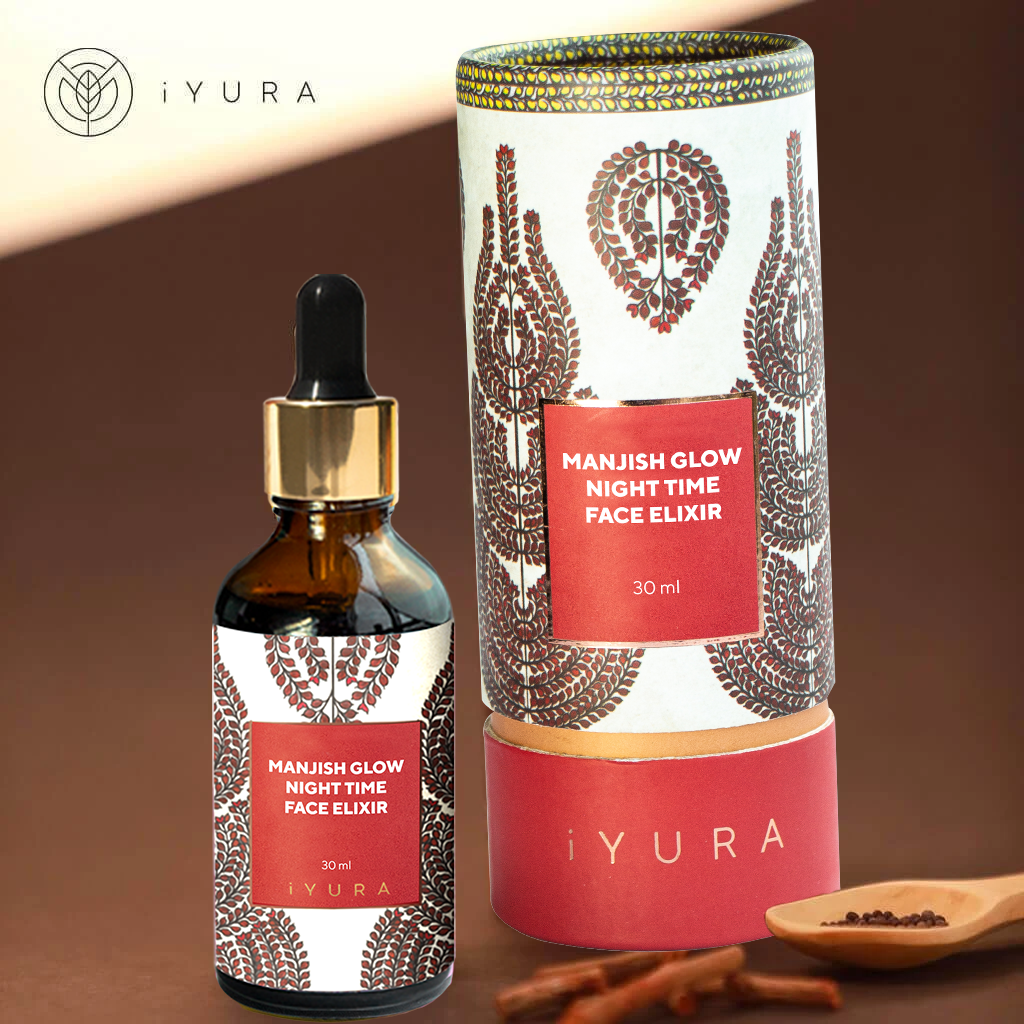
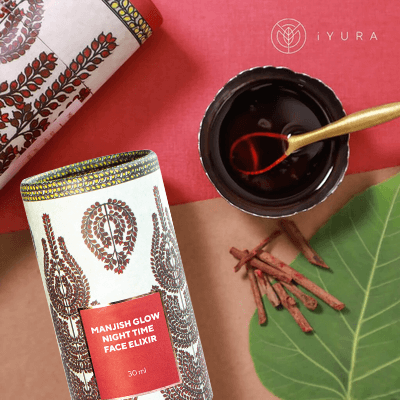
Night-time skin-reviving Face oil
uber-rich in Manjish for
even-looking complexion
Glow-giving,
even-toning and complexion-restoring Ayurvedic formulation
Pacifies Pitta Dosha
Learn more
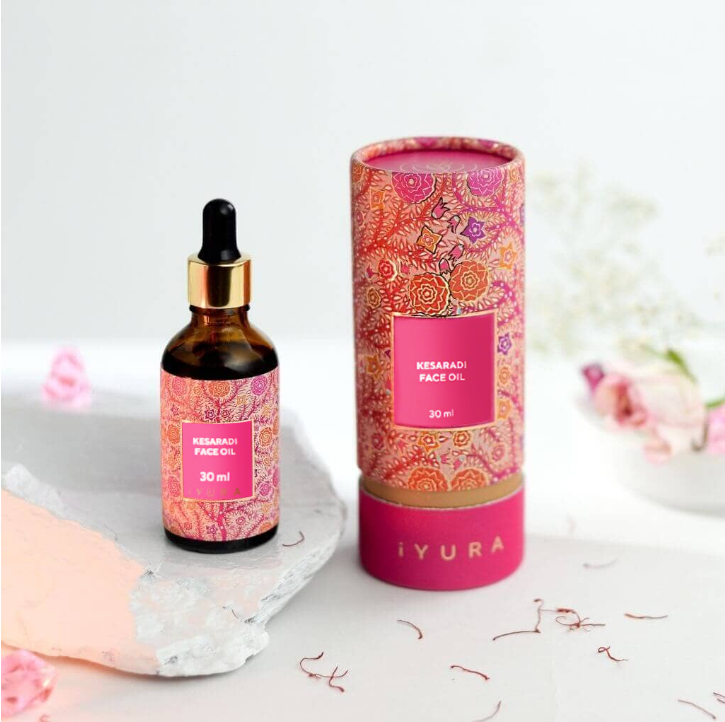
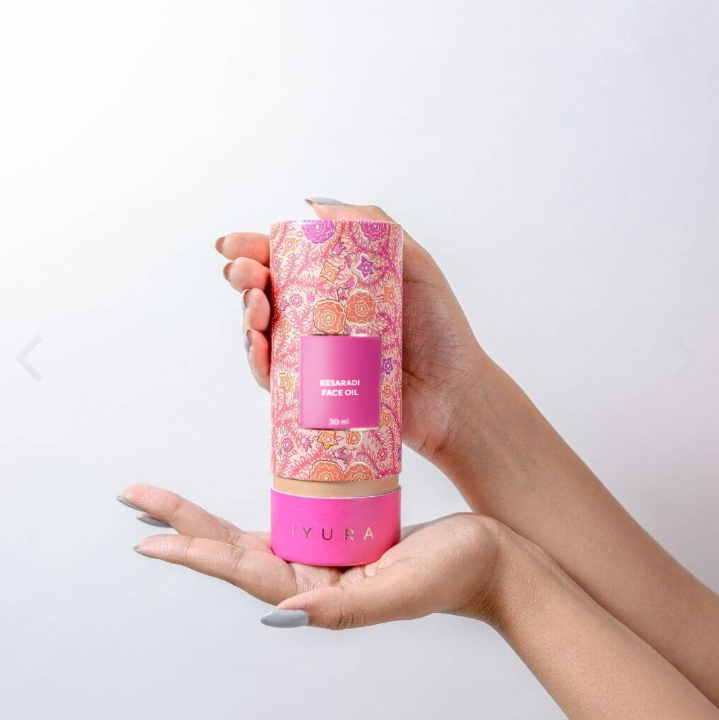
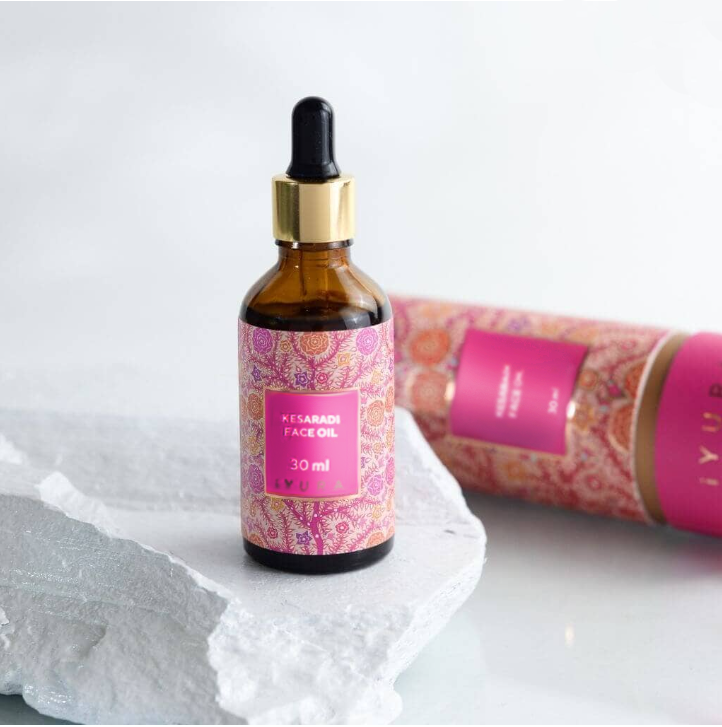
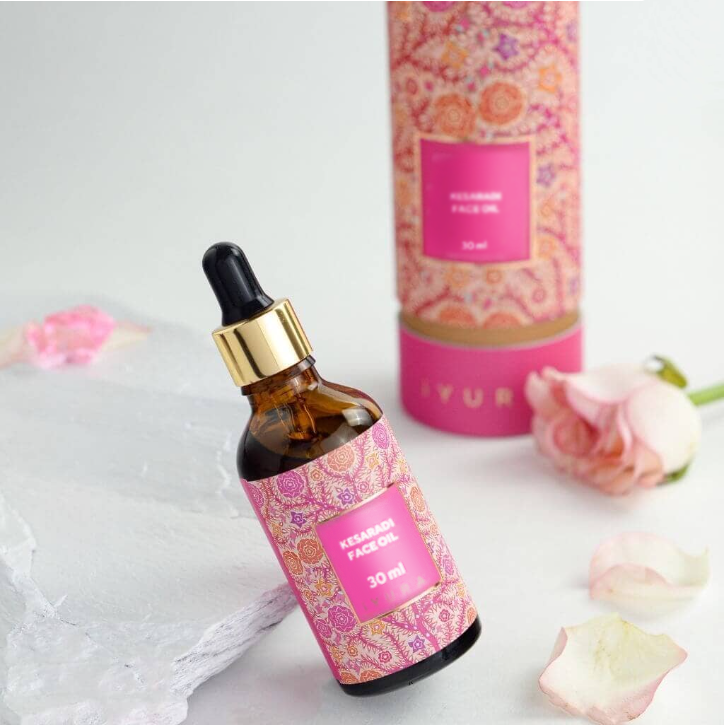
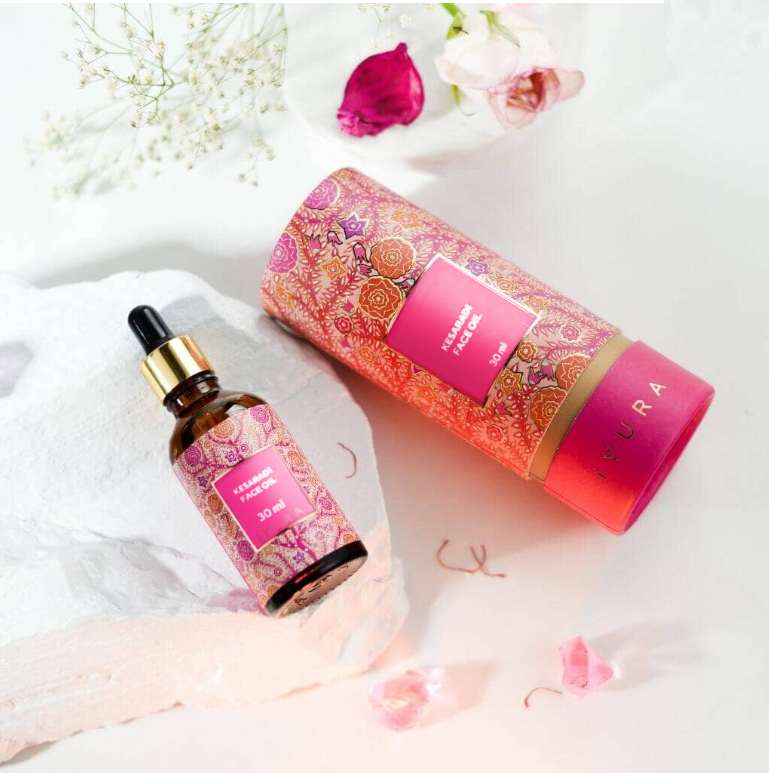
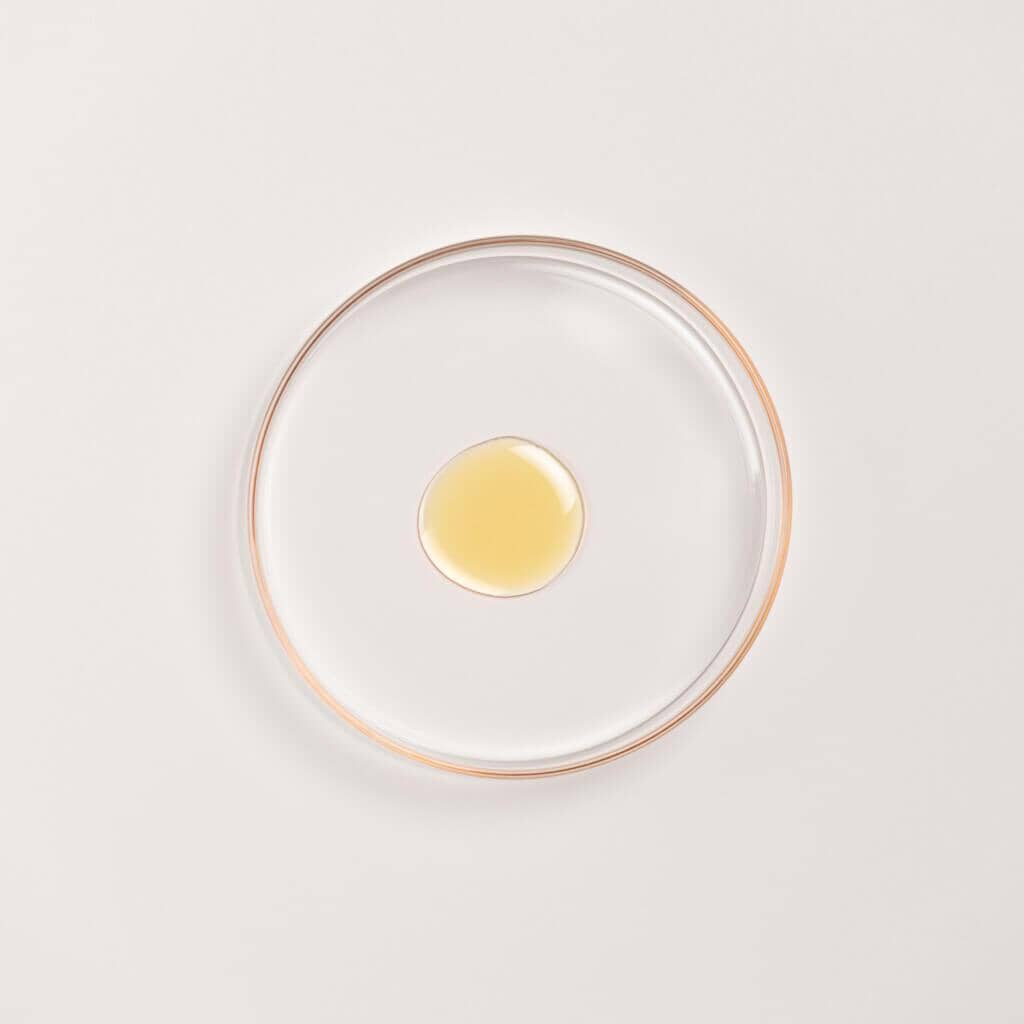
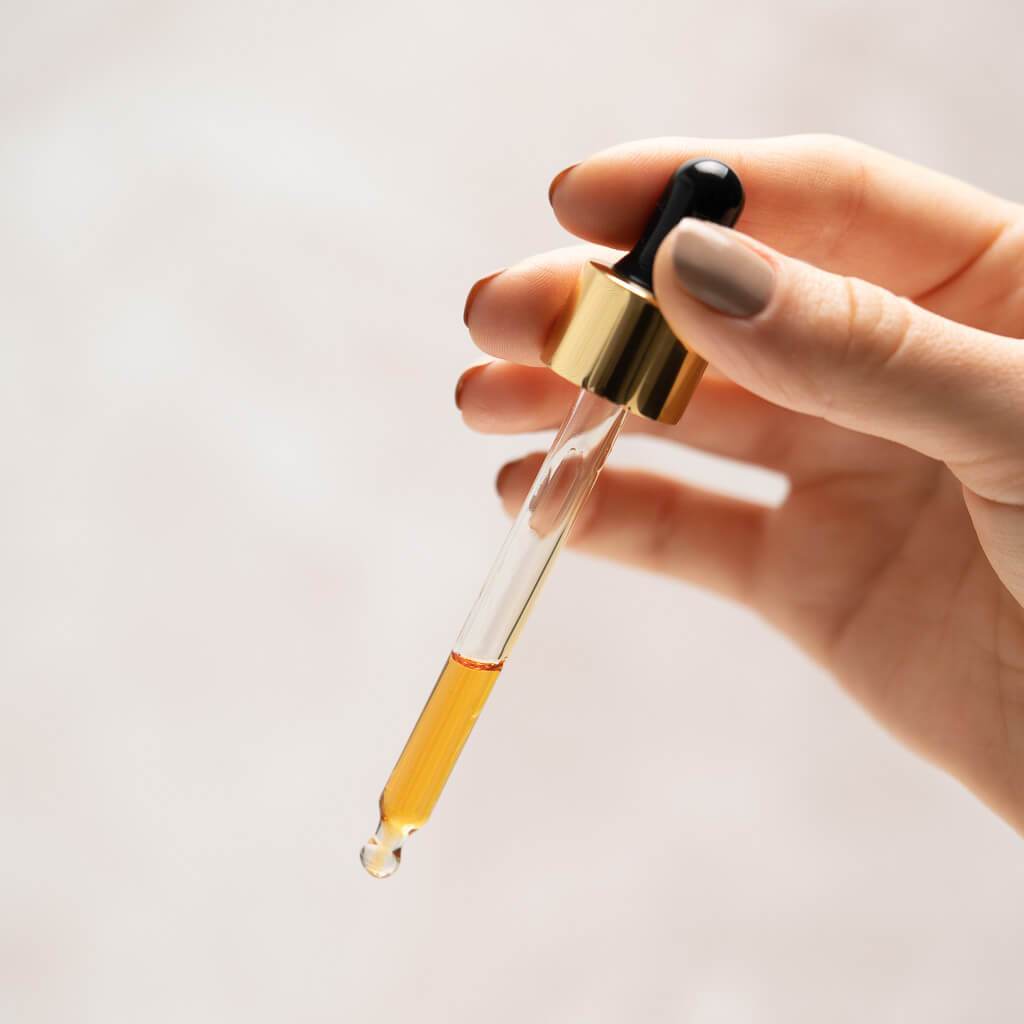
Saffron or ‘Kesar’-rich day-time Face oil for
nourished, glowing and
soft skin.
Brightening, Revitalizing and Uber Nourishing formulation for your
mornings!
Pacifies Vata and Pitta Doshas
Learn more








Wholesome Moisturiser with 11 Ayurvedic Ingredients.
Also acts as a
pre-makeup moisturizer.
Contains
skin-brightening and nourishing Vitamins to revive the look of dull skin.
Pacifies Vata Dosha
Learn more
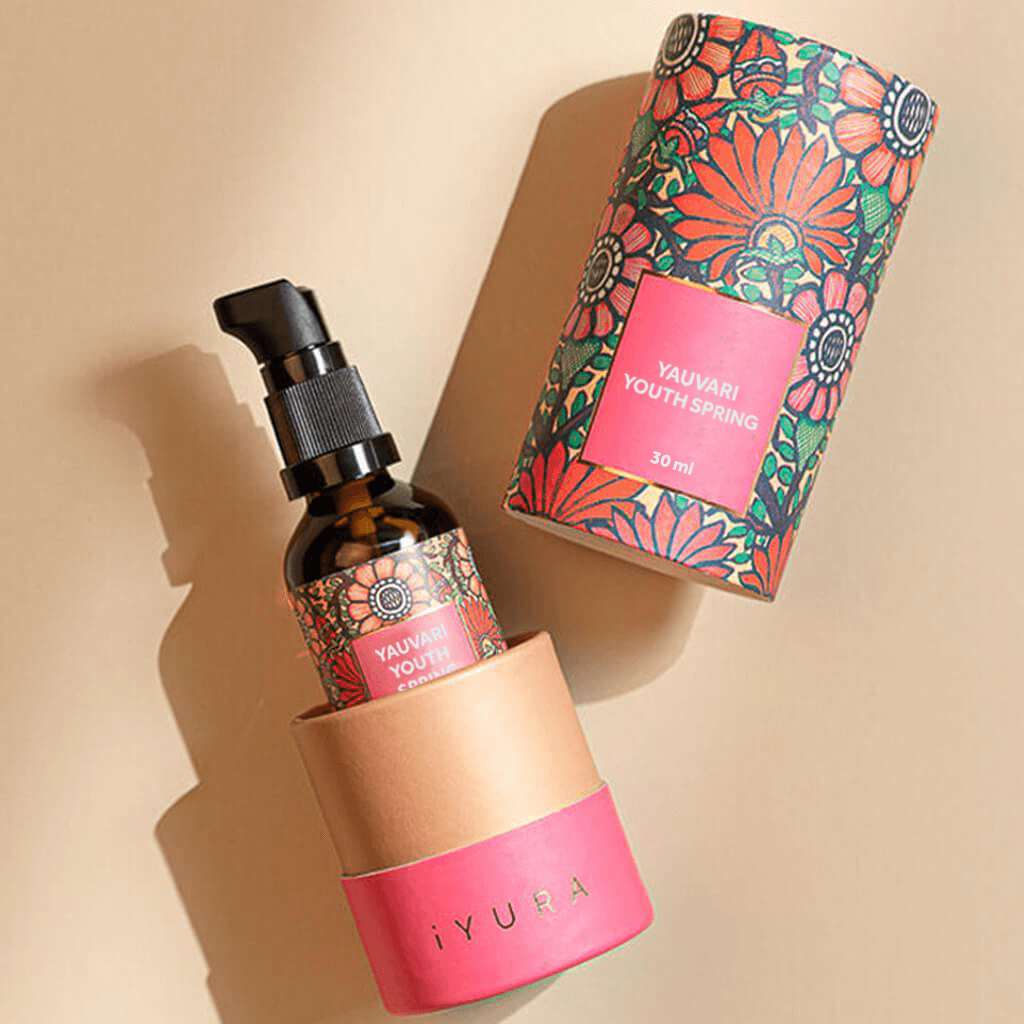
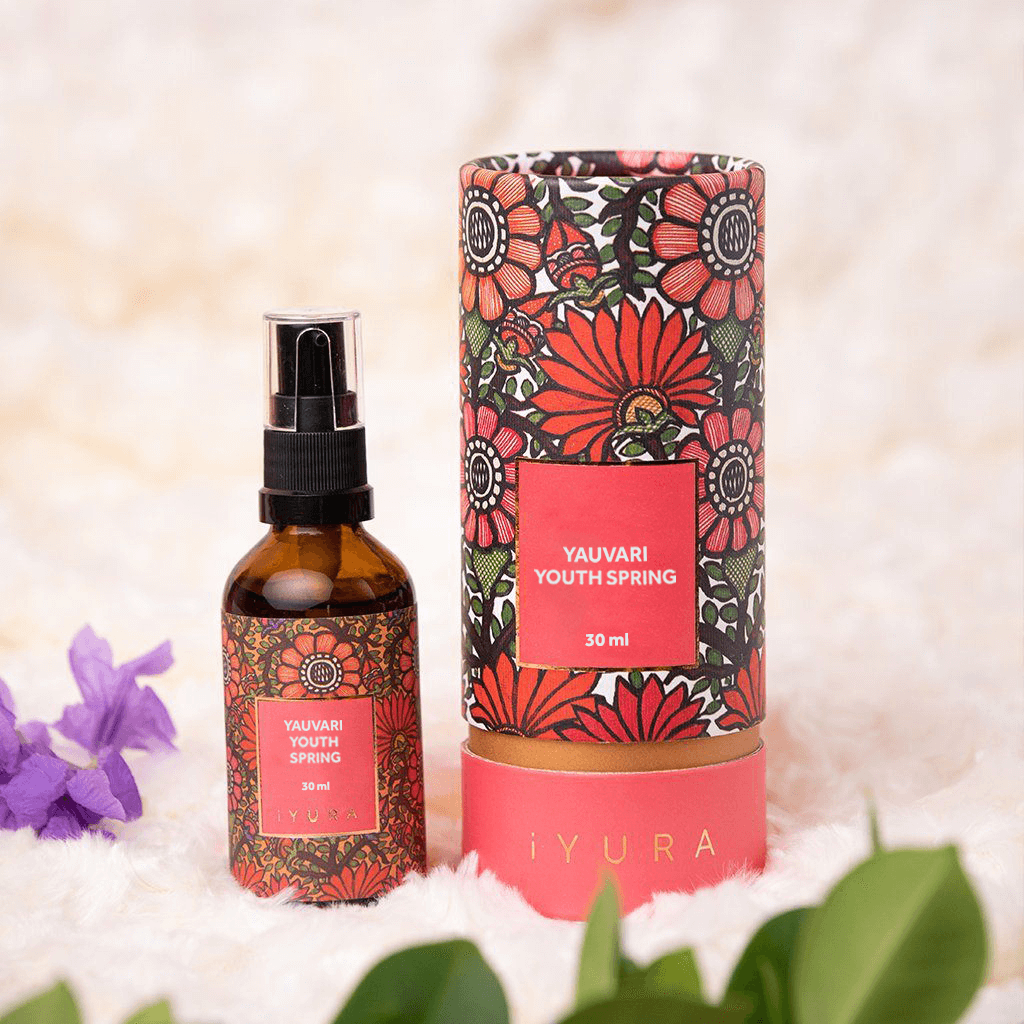
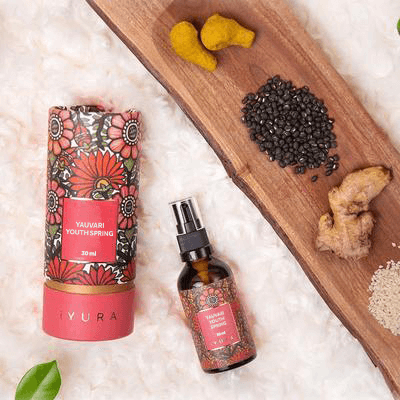
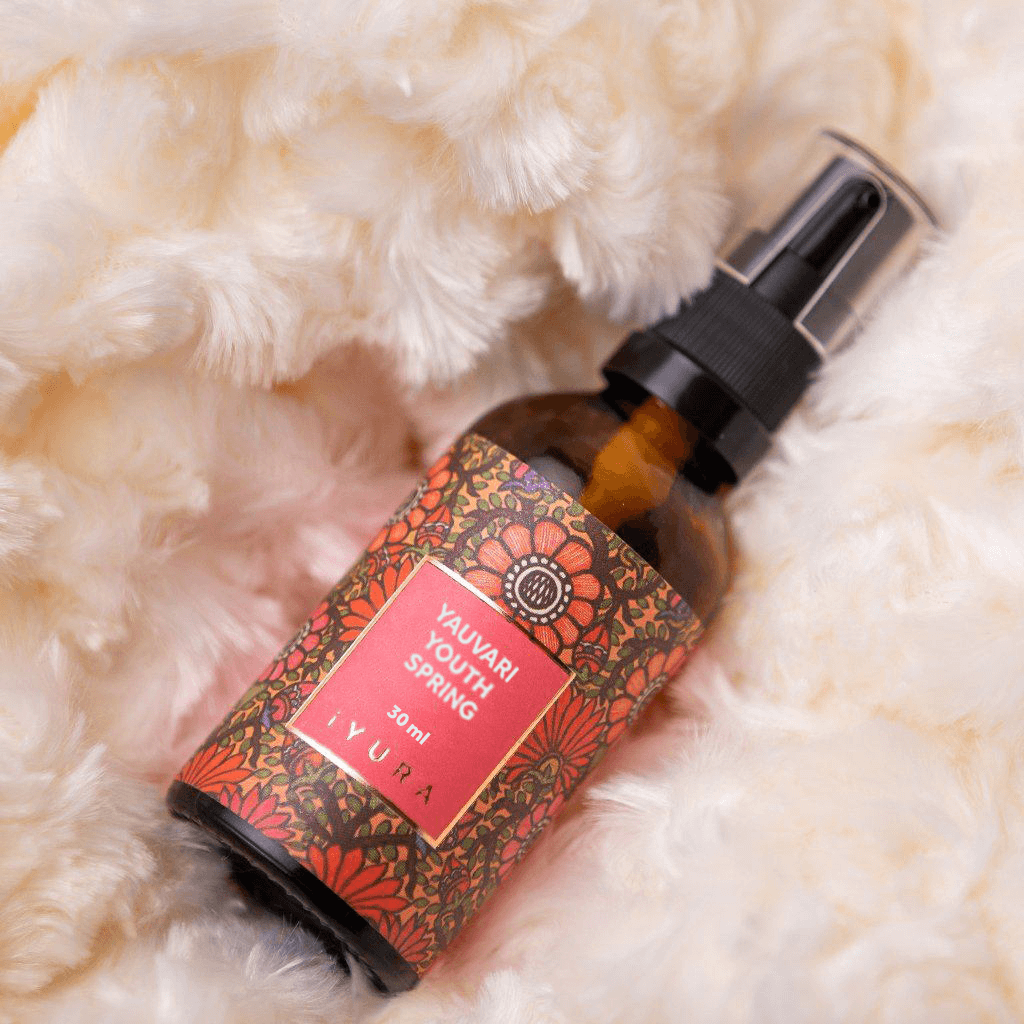
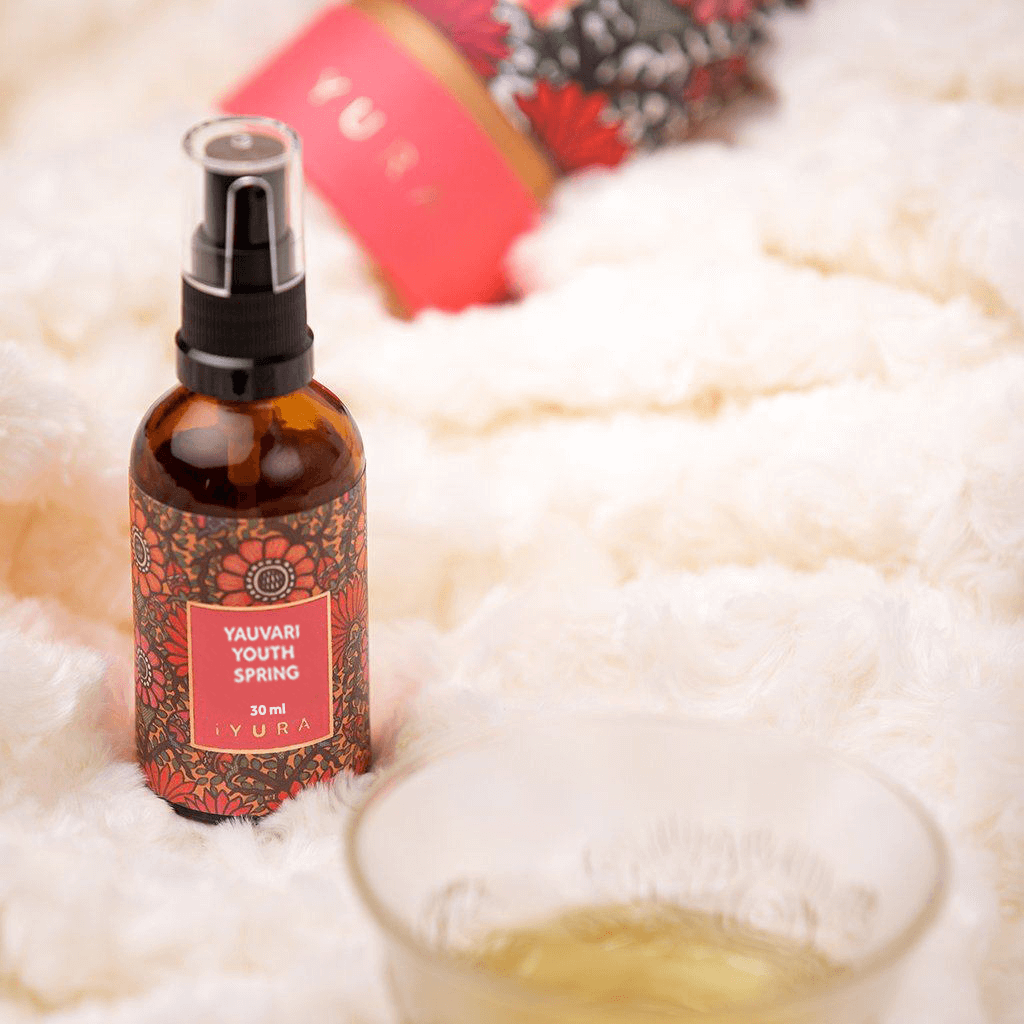
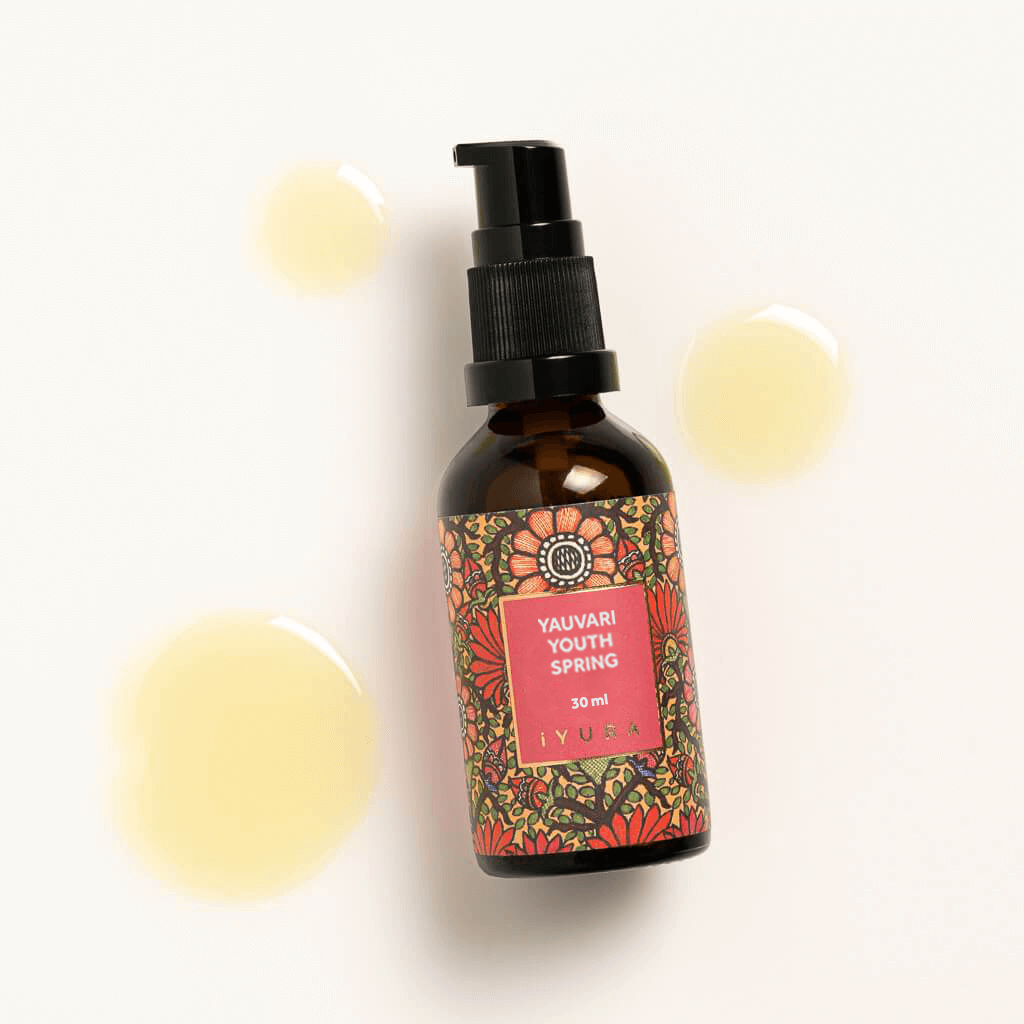
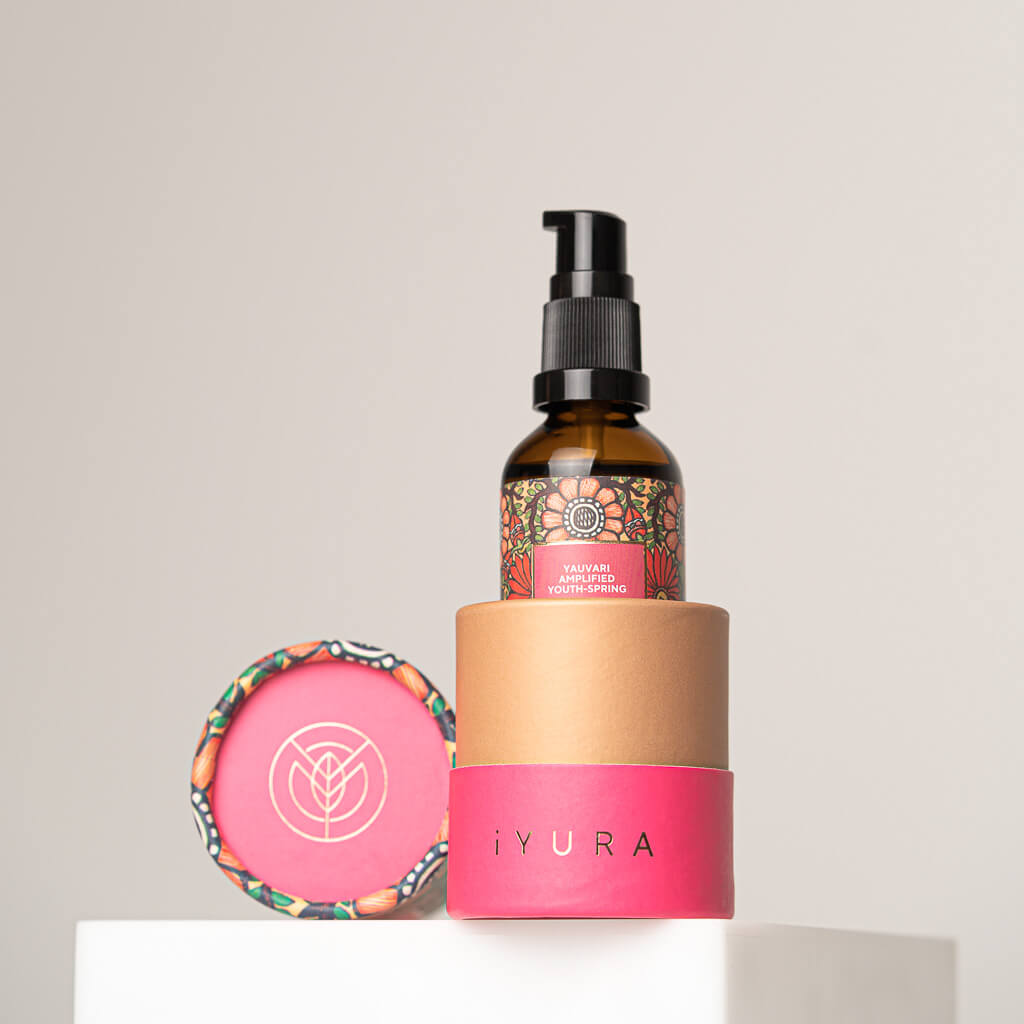
Black Gram-rich Face oil specifically meant to
dry, aging, mature skin
Deeply firming, toning and moisturising Ayurvedic face oil
Pacifies Vata Dosha
Learn more




It
balances the visible effects of dryness, aging, soothes the appearance of flushed, acne-prone skin, and leaves you (and your skin) feeling relaxed with its ethereal aroma.
Get ready to glow from inside out!




A blend of time-honored ingredients such as
Sweetgrass, Aloe Vera, Helichrysum, Soy Glycerin, this toner works perfectly for dull, sensitive skin.
These will give your skin a boost of gentle hydration.
Pacifies Pitta Dosha
Learn moreNot sure which product will work the best for you?
Meet with our Ayurvedic Experts for a one-on-one 15-minute video call to find the best product for you
Book your free call now